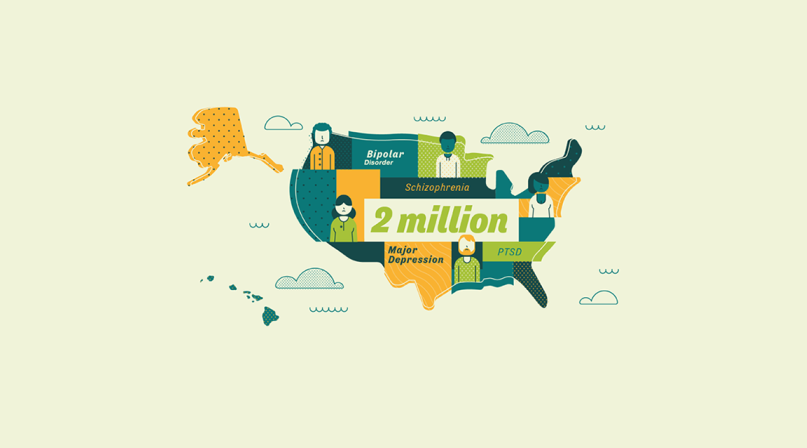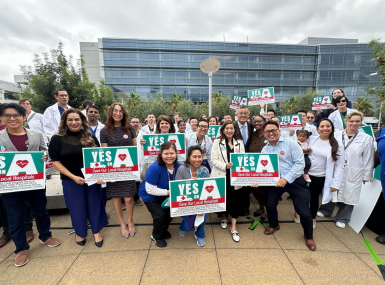Stepping up to the challenge of helping mentally ill persons move away from jail
Author

Fred Osher
Upcoming Events
Related News

 Jim is a 37-year-old male who asked to see a psychiatrist (the author) at the homeless shelter where he was staying. He had been released from jail a week ago and didn’t have any medications for his bipolar disorder. Without sleep for the past four nights he appeared disheveled and desperate. Jim had a history of multiple arrests for misdemeanor offensives, but now faces felony drug charges for possession and sale of methamphetamine. While medications were his primary reason for seeking help, his most important goal was expressed in his plea “I don’t want to go back to jail.”
Jim is a 37-year-old male who asked to see a psychiatrist (the author) at the homeless shelter where he was staying. He had been released from jail a week ago and didn’t have any medications for his bipolar disorder. Without sleep for the past four nights he appeared disheveled and desperate. Jim had a history of multiple arrests for misdemeanor offensives, but now faces felony drug charges for possession and sale of methamphetamine. While medications were his primary reason for seeking help, his most important goal was expressed in his plea “I don’t want to go back to jail.”
Share |
The overrepresentation of persons with mental illnesses in the criminal justice system is a well documented American tragedy: Law enforcement agencies around the country are swamped with calls to respond to “emotionally disturbed persons;” county jails are regularly cited as having the largest number of persons with mental illnesses of any public institutions; and sheriffs rightfully complain about running the de facto mental health facility in their community. Over 1 million times a year, an adult with a serious mental illness is arrested in this country and spirals through ill-prepared systems.
As a community psychiatrist providing services to individuals with serious mental illnesses for almost 40 years, I’ve had a front row seat to this evolving dilemma. An underfunded, eroding behavioral health infrastructure has made it difficult for families and patients to find treatment and supports. When law enforcementis called to assist a person with mental illness in crisis and has no alternatives, booking into the local jail may be the only option. Most criminal justice personnel and behavioral health treatment personnel agree that jail and prison environments are not the best treatment setting for individuals with mental illnesses.
The pathways to incarceration for these individuals are varied, yet when they get involved in the criminal justice system, the symptoms of their mental illnesses and substance use disorders ensnare them. Once arrested, they are less likely to make bail, spend longer periods of time on pre-trial status, experience longer lengths of stay within jail and prison (controlling for charges and sentences) and have higher recidivism rates on release —compared to those without these disorders.
For individuals with mental illnesses, contact with the criminal justice system can start a cycle of arrest, incarceration, release and re-arrest that can pose nearly insurmountable challenges to recovery.
Stigma is a powerful force at the criminal justice-behavioral health intersection — on both sides. Professionals in the criminal justice field often fear contact with people who have mental illnesses. So too, professionals in behavioral health are leery of working with “criminals,” even though so many of their clients have criminal justice backgrounds.
I work in homeless service settings where a significant proportion of people have serious mental illnesses, have been been previously arrested, and like Jim, nobody wants to return to jail. Yet, having a criminal history makes life complicated. Landlords don’t want to rent to you; employers are reluctant to hire you, and even providers are leery of serving you.
So what can be done? Innovative practices exist in counties around the United States, and we have learned key lessons needed to drive down the number of people with mental illnesses in our jails. Our objectives are to avoid incarcerations for those individuals that don’t pose a public safety risk, minimize the time in custody for those that are arrested, connect them to effective care upon release, and support them in the community so they don’t get arrested again.
To advance these objectives, law enforcement needs training and crisis alternatives need to be available. By the same token, relevant clinical information needs to be shared. Confidentiality and privacy laws are too often misinterpreted by behavioral treatment personnel preventing this essential flow of information. Providing case management services to those with complex psychiatric, physical, legal and social needs should also be a part of the service package. And all of these interventions should be guided by the available research to ensure positive outcomes are realized.
The status quo is not acceptable, nor is it immutable. First we must recognize that jails and prisons, and the people they serve, are part of our community. Arrest and incarceration are never acceptable substitutes for the provision of appropriate treatment for individuals with behavioral health needs.
No one system can provide the range of services, supervision and supports that are needed to address the complex needs of justice-involved individuals. That is precisely why county leadership is required to bring stakeholders together, set expectations, and track progress. Counties around this country are stepping up to make a difference. Jim deserves no less.
Attachments
Related News

CMS issues new guidance on Medicaid Community Engagement Requirements
On December 8, the Centers for Medicare & Medicaid Services (CMS) released a Medicaid and CHIP Services Informational Bulletin (CIB) directing states on how to implement the Medicaid community engagement requirements enacted under Section 71119 of the One Big Beautiful Bill Act legislation (Public Law 119-21), or H.R. 1.

California county sales tax measure backfills federal healthcare cuts
Santa Clara County, Calif. will raise an estimated $330 million each year from a sales tax to backfill lose Medicaid funding.
